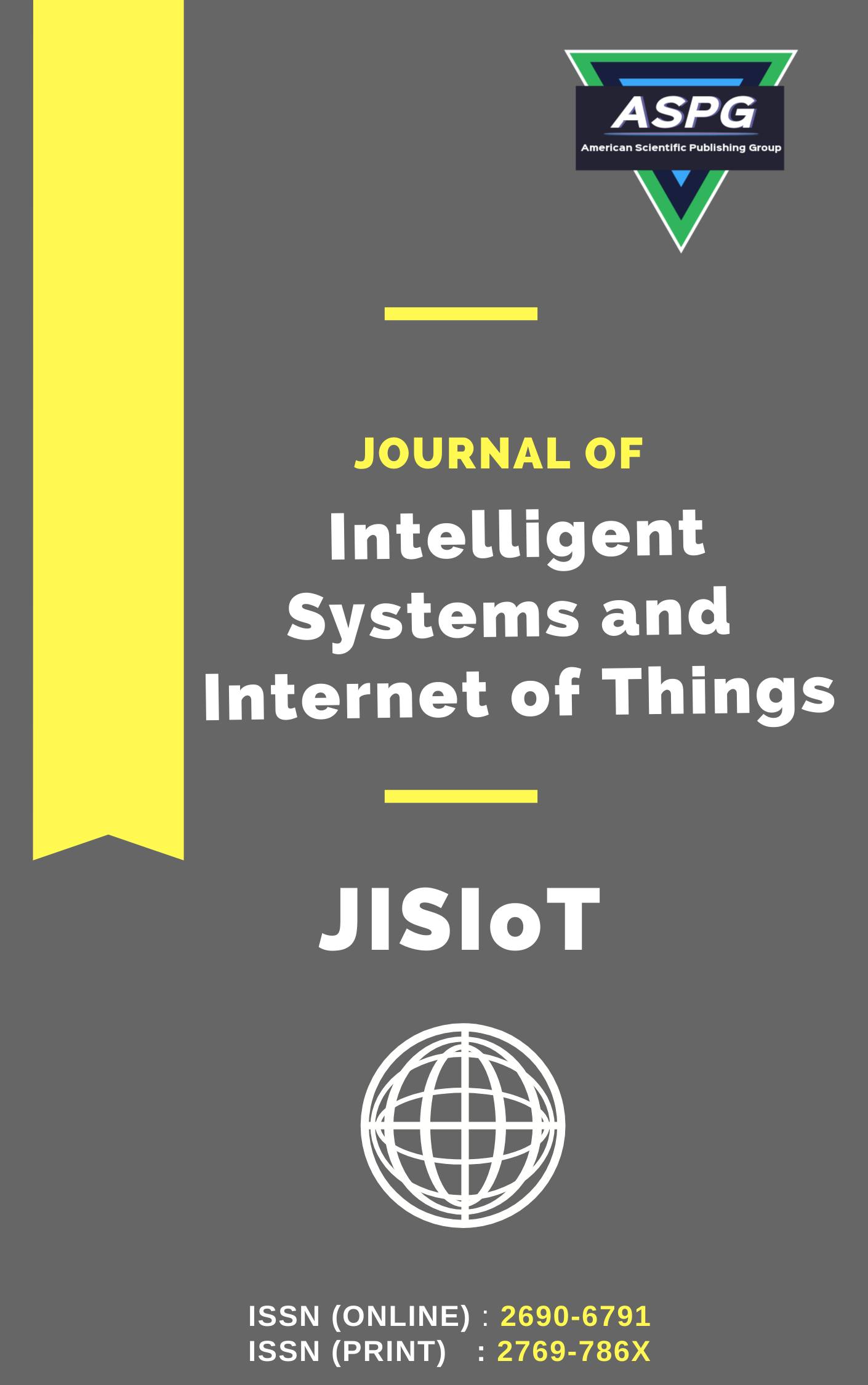

Volume 18 , Issue 1 , PP: 341-348, 2026 | Cite this article as | XML | Html | PDF | Full Length Article
Hussein Ibrahim Hussein 1 * , Lateef Abd Zaid Qudr 2 , Weal Hasan Ali Almohammed 3
Doi: https://doi.org/10.54216/JISIoT.180126
Mammals are susceptible to the lethal disease called coronavirus. This virus often infects humans through the aerial precipitation of any fluid released from the bodily part of the affected entity. This viral variant is deadlier than other sudden viruses. Given the ongoing thread which COVID-19 on health systems in the worldwide, there is a rising interest in development a mechanism that effective in terms of cost and classification. A mechanism for categorizing and scrutinizing the estimations derived from this virus' symptoms is proposed in this paper. The precision of various machine-learning classifiers is calculated in this study in order to determine the optimal classifier for COVID-19 identification. Because the COVID-19 dataset has the greatest precision of 100%, it was classified using AdaBoost and Bagging. Additionally, precision, recall, and F-score measures together with the ROC were deployed for evaluating detection performance to ensure the approach is capable and successful.
Covid-19 , Detection , Bagging , AdaBoost , Machine Learning
[1] P. Shi, Y. Wang, S. Abbasi, and A. Wong, "COVID-Net Assistant: A deep learning-driven virtual assistant for COVID-19 symptom prediction and recommendation," arXiv preprint arXiv: 2211.11944, 2022.
[2] D. A. Kass, P. Duggal, and O. Cingolani, “Obesity could shift severe COVID-19 disease to younger ages,” Lancet, vol. 395, no. 10236, pp. 1544–1545, 2020.
[3] Y. Raddad, A. Hasasneh, O. Abdallah, C. Rishmawi, and N. Qutob, “Integrating Statistical Methods and Machine Learning Techniques to Analyze and Classify COVID-19 Symptom Severity,” Big Data and Cognitive Computing, vol. 8, no. 12, p. 192, 2024.
[4] M. J. Binnicker, “Challenges and controversies to testing for COVID-19,” Journal of Clinical Microbiology, vol. 58, no. 11, Oct. 2020, doi: 10.1128/jcm.01695-20.
[5] M. A. Callejon-Leblic, “Loss of Smell and Taste Can Accurately Predict COVID-19 Infection: A Machine-Learning Approach,” Journal of Clinical Medicine, vol. 10, no. 4, p. 570, 2021, doi: 10.3390/jcm10040570.
[6] H. Mohammad-Rahimi, M. Nadimi, A. Ghalyanchi-Langeroudi, M. Taheri, and S. Ghafouri-Fard, "Application of machine learning in diagnosis of COVID-19 through X-ray and CT images: A scoping review," Frontiers in Cardiovascular Medicine, vol. 8, p. 638011, 2021, doi: 10.3389/fcvm.2021.638011.
[7] L. Wang and A. Wong, "COVID-Net: a tailored deep convolutional neural network design for detection of COVID-19 cases from chest X-ray images," Scientific Reports, vol. 10, no. 1, p. 1, 2020, doi: 10.1038/s41598-020-76550-z.
[8] E. Dritsas and M. Trigka, "Supervised machine learning models to identify early-stage symptoms of SARS-CoV-2," Sensors, vol. 23, no. 1, p. 40, 2022, doi: 10.3390/s23010040.
[9] M. Malik, "Determination of COVID-19 patients using machine learning algorithms," Intelligent Automation & Soft Computing, vol. 31, no. 1, pp. 207–222, 2022, doi: 10.32604/iasc.2022.018753.
[10] M. Pant and A. Vidyarthi, "COVID-19 prediction classification models comparison by patient's symptoms and medical history," in Challenges in Information, Communication and Computing Technology, CRC Press, 2025, pp. 381–386, doi: 10.1201/9781003559085-67.
[11] A. Kumari and A. K. Mehta, "Effective prediction of COVID-19 using supervised machine learning with ensemble modeling," in Algorithms for Intelligent Systems, pp. 537–547, 2022, doi: 10.1007/978-981-16-5747-4_45.
[12] A. Ekong, "Supervised machine learning model for effective classification of patients with COVID-19 symptoms based on Bayesian belief network," Researchers Journal of Science and Technology, vol. 2, no. 1, pp. 27–33, 2022.
[13] A. F. Al-Zubidi, N. F. Al-Bakri, R. K. Hasoun, S. H. Hashim, and H. T. Alrikabi, "Mobile application to detect COVID-19 pandemic by using classification techniques: Proposed system," International Journal of Interactive Mobile Technologies, vol. 15, no. 16, 2021, doi: 10.3991/ijim.v15i16.24195.
[14] Z. H. Arif and K. Cengiz, "Severity classification for COVID-19 infections based on LASSO-logistic regression model," International Journal of Mathematics, Statistics, and Computer Science, vol. 1, pp. 25–32, 2023, doi: 10.59543/ijmscs.v1i.7715.
[15] L. S. Suma, H. S. Anand, and S. S. Vinod Chandra, "Nature inspired optimization model for classification and severity prediction in COVID-19 clinical dataset," Journal of Ambient Intelligence and Humanized Computing, vol. 14, no. 3, pp. 1699–1711, 2023, doi: 10.1007/s12652-021-03389-1.
[16] L. Breiman, "Bagging predictors," Machine Learning, vol. 24, pp. 123–140, 1996.
[17] G. Liang, X. Zhu, and C. Zhang, "An empirical study of bagging predictors for different learning algorithms," in Proc. AAAI Conf. Artif. Intell, vol. 25, no. 1, pp. 1802–1803, Aug. 2011.
[18] Y. Freund and R. E. Schapire, "Experiments with a new boosting algorithm," in Proc. 13th Int. Conf. Machine Learning (ICML), vol. 96, pp. 148–156, July 1996.